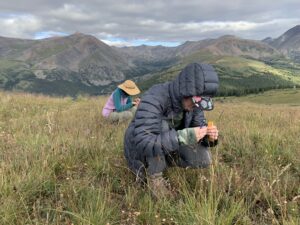OBJECTIVE 4. Build capacity for the conservation of alpine plant species and associated habitats
TARGET 11:
Increase the number of trained professionals working on North American alpine plant conservation to address local, regional and national needs by 2030.
Botany is an established science. However, there has been a decline in formal botanical education programs at all levels and in the number of professional government agency botanists, raising concern about the future study and fate of plants.39 A deficiency of educational programs and interest in botanical studies has led to a general lack of basic botany and plant identification skills in the current generation of scientists.
Botanic gardens must increase educational programs, fieldwork, and research in alpine plants to address the decline in botanical studies and shortage of botanists and horticulturists. These programs and collaborative efforts with universities will contribute to training future botanists and horticulturists whose work will be necessary to stem the growing loss of the world’s plants and threats to botanical diversity.
Progress
Currently underway!
Approach
While there are many passionate plant-people out there, the number of educational and professional opportunities for trained botanists has been decreasing over time. But the need for skilled botanists and conservationists hasn’t! One of the ways Betty Ford Alpine Gardens is working to achieve this goal is through our summer internship program, where recent college graduates learn what it’s like to work in conservation, horticulture, and science education, and hopefully get inspired by the amazing alpine ecosystem.



